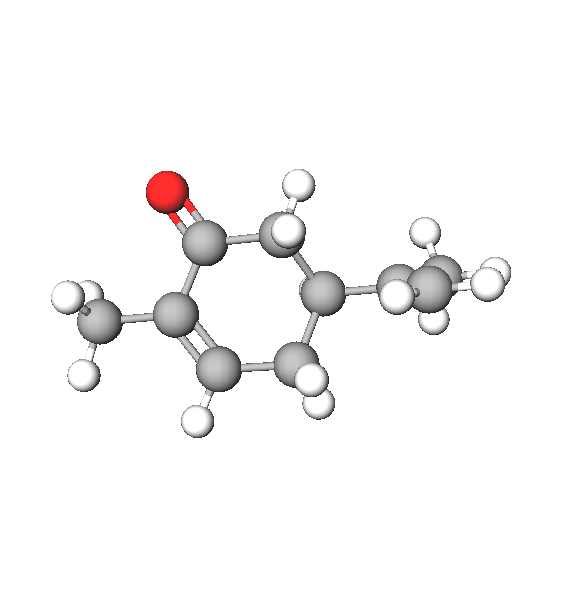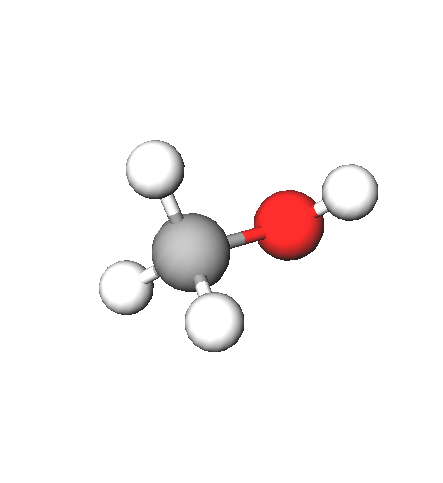Vocabulary II
- Page ID
- 46337
\( \newcommand{\vecs}[1]{\overset { \scriptstyle \rightharpoonup} {\mathbf{#1}} } \)
\( \newcommand{\vecd}[1]{\overset{-\!-\!\rightharpoonup}{\vphantom{a}\smash {#1}}} \)
\( \newcommand{\dsum}{\displaystyle\sum\limits} \)
\( \newcommand{\dint}{\displaystyle\int\limits} \)
\( \newcommand{\dlim}{\displaystyle\lim\limits} \)
\( \newcommand{\id}{\mathrm{id}}\) \( \newcommand{\Span}{\mathrm{span}}\)
( \newcommand{\kernel}{\mathrm{null}\,}\) \( \newcommand{\range}{\mathrm{range}\,}\)
\( \newcommand{\RealPart}{\mathrm{Re}}\) \( \newcommand{\ImaginaryPart}{\mathrm{Im}}\)
\( \newcommand{\Argument}{\mathrm{Arg}}\) \( \newcommand{\norm}[1]{\| #1 \|}\)
\( \newcommand{\inner}[2]{\langle #1, #2 \rangle}\)
\( \newcommand{\Span}{\mathrm{span}}\)
\( \newcommand{\id}{\mathrm{id}}\)
\( \newcommand{\Span}{\mathrm{span}}\)
\( \newcommand{\kernel}{\mathrm{null}\,}\)
\( \newcommand{\range}{\mathrm{range}\,}\)
\( \newcommand{\RealPart}{\mathrm{Re}}\)
\( \newcommand{\ImaginaryPart}{\mathrm{Im}}\)
\( \newcommand{\Argument}{\mathrm{Arg}}\)
\( \newcommand{\norm}[1]{\| #1 \|}\)
\( \newcommand{\inner}[2]{\langle #1, #2 \rangle}\)
\( \newcommand{\Span}{\mathrm{span}}\) \( \newcommand{\AA}{\unicode[.8,0]{x212B}}\)
\( \newcommand{\vectorA}[1]{\vec{#1}} % arrow\)
\( \newcommand{\vectorAt}[1]{\vec{\text{#1}}} % arrow\)
\( \newcommand{\vectorB}[1]{\overset { \scriptstyle \rightharpoonup} {\mathbf{#1}} } \)
\( \newcommand{\vectorC}[1]{\textbf{#1}} \)
\( \newcommand{\vectorD}[1]{\overrightarrow{#1}} \)
\( \newcommand{\vectorDt}[1]{\overrightarrow{\text{#1}}} \)
\( \newcommand{\vectE}[1]{\overset{-\!-\!\rightharpoonup}{\vphantom{a}\smash{\mathbf {#1}}}} \)
\( \newcommand{\vecs}[1]{\overset { \scriptstyle \rightharpoonup} {\mathbf{#1}} } \)
\( \newcommand{\vecd}[1]{\overset{-\!-\!\rightharpoonup}{\vphantom{a}\smash {#1}}} \)
\(\newcommand{\avec}{\mathbf a}\) \(\newcommand{\bvec}{\mathbf b}\) \(\newcommand{\cvec}{\mathbf c}\) \(\newcommand{\dvec}{\mathbf d}\) \(\newcommand{\dtil}{\widetilde{\mathbf d}}\) \(\newcommand{\evec}{\mathbf e}\) \(\newcommand{\fvec}{\mathbf f}\) \(\newcommand{\nvec}{\mathbf n}\) \(\newcommand{\pvec}{\mathbf p}\) \(\newcommand{\qvec}{\mathbf q}\) \(\newcommand{\svec}{\mathbf s}\) \(\newcommand{\tvec}{\mathbf t}\) \(\newcommand{\uvec}{\mathbf u}\) \(\newcommand{\vvec}{\mathbf v}\) \(\newcommand{\wvec}{\mathbf w}\) \(\newcommand{\xvec}{\mathbf x}\) \(\newcommand{\yvec}{\mathbf y}\) \(\newcommand{\zvec}{\mathbf z}\) \(\newcommand{\rvec}{\mathbf r}\) \(\newcommand{\mvec}{\mathbf m}\) \(\newcommand{\zerovec}{\mathbf 0}\) \(\newcommand{\onevec}{\mathbf 1}\) \(\newcommand{\real}{\mathbb R}\) \(\newcommand{\twovec}[2]{\left[\begin{array}{r}#1 \\ #2 \end{array}\right]}\) \(\newcommand{\ctwovec}[2]{\left[\begin{array}{c}#1 \\ #2 \end{array}\right]}\) \(\newcommand{\threevec}[3]{\left[\begin{array}{r}#1 \\ #2 \\ #3 \end{array}\right]}\) \(\newcommand{\cthreevec}[3]{\left[\begin{array}{c}#1 \\ #2 \\ #3 \end{array}\right]}\) \(\newcommand{\fourvec}[4]{\left[\begin{array}{r}#1 \\ #2 \\ #3 \\ #4 \end{array}\right]}\) \(\newcommand{\cfourvec}[4]{\left[\begin{array}{c}#1 \\ #2 \\ #3 \\ #4 \end{array}\right]}\) \(\newcommand{\fivevec}[5]{\left[\begin{array}{r}#1 \\ #2 \\ #3 \\ #4 \\ #5 \\ \end{array}\right]}\) \(\newcommand{\cfivevec}[5]{\left[\begin{array}{c}#1 \\ #2 \\ #3 \\ #4 \\ #5 \\ \end{array}\right]}\) \(\newcommand{\mattwo}[4]{\left[\begin{array}{rr}#1 \amp #2 \\ #3 \amp #4 \\ \end{array}\right]}\) \(\newcommand{\laspan}[1]{\text{Span}\{#1\}}\) \(\newcommand{\bcal}{\cal B}\) \(\newcommand{\ccal}{\cal C}\) \(\newcommand{\scal}{\cal S}\) \(\newcommand{\wcal}{\cal W}\) \(\newcommand{\ecal}{\cal E}\) \(\newcommand{\coords}[2]{\left\{#1\right\}_{#2}}\) \(\newcommand{\gray}[1]{\color{gray}{#1}}\) \(\newcommand{\lgray}[1]{\color{lightgray}{#1}}\) \(\newcommand{\rank}{\operatorname{rank}}\) \(\newcommand{\row}{\text{Row}}\) \(\newcommand{\col}{\text{Col}}\) \(\renewcommand{\row}{\text{Row}}\) \(\newcommand{\nul}{\text{Nul}}\) \(\newcommand{\var}{\text{Var}}\) \(\newcommand{\corr}{\text{corr}}\) \(\newcommand{\len}[1]{\left|#1\right|}\) \(\newcommand{\bbar}{\overline{\bvec}}\) \(\newcommand{\bhat}{\widehat{\bvec}}\) \(\newcommand{\bperp}{\bvec^\perp}\) \(\newcommand{\xhat}{\widehat{\xvec}}\) \(\newcommand{\vhat}{\widehat{\vvec}}\) \(\newcommand{\uhat}{\widehat{\uvec}}\) \(\newcommand{\what}{\widehat{\wvec}}\) \(\newcommand{\Sighat}{\widehat{\Sigma}}\) \(\newcommand{\lt}{<}\) \(\newcommand{\gt}{>}\) \(\newcommand{\amp}{&}\) \(\definecolor{fillinmathshade}{gray}{0.9}\)The assignment is to define and build a comprehensive list of the Key Vocabulary Terms, which are pertinent to and used in Chem 106.
Phase I and Phase II have been completed, and open to the public. This is an ongoing, expanding list and will be added to throughout the course.
- Acid: A chemical species that donates protons or hydrogen ions and/or accepts electrons.
- Activation Energy: The minimum amount of energy required to initiate a reaction and is denoted by Ea.
- Amino acids: An amino acid is a type of organic acid that contains an acid functional group and an amine functional group
- Anabolic: Chemical reactions that use simpler substances to form more complex molecules or to store energy, these usually require energy.
- Anion: An ion that has a negative charge because it has a surplus of electrons.
- Base: An anionic substance that accepts a proton during an acid-base reaction.
- Catabolic: Is the breakdown of complex molecules into simpler substances which causes a release of energy that is used to drive chemical reactions like anabolic reactions.
- Catalyst: A substance that increases the rate of a chemical reaction without itself undergoing any permanent chemical change
- Catenane: A class of chemical compounds that contains two of more interlocking rings that aren't bonded chemically.
- Cation: postive charged ions.
- Chemical formula: states the number and type of atoms is a molecule of a given substance.
- Chromatography:The separation of a mixture by passing it in solution through a medium in which the components move at different rates. ( color separation)
- Condensation: The conversion of vapor gas to liquid.
- Covalent bond:a kind of chemical bond where atoms share the outermost valence electrons.
- Decomposition: It is the analysis of the separation of a chemical compound into elements or simpler compounds. Usually these aren't desired chemical reactions.
- Deposition: the direct solidification of a vapor by cooling; the reserve of sublimation ( chen wang )
- Electrolyte: A substance which when dissolved produces a solution that conducts electricity.
- Endothermic (Endergonic):a process which absorbs thermal (heat) energy.
- Energy: The potential or capacity to do work. It is expressed in joules.
- Enzyme: A substance produced by a living organism that acts as a catalyst to bring about a specific biochemical reaction
- Exothermic (Exergonic): a reaction or process that releases energy in the form of heat.
- Ionic bond: A bond in which electrons are transferred between atoms
- Ionization:The molecule has the charge by ions getting or losing the electrons in the chemical change.
- Isomers: Each of two or more compounds with the same formula but a different arrangment of atoms in the molecute and different properties. (AK)
- Joule: an SI unit of energy or work represented by "J".
- Kinetics: The rate of a chemical or biochemical reaction.
- Lewis structure: a 2D/flat representation (using lines, dots and symbols) of the bonds between atoms of a molecule and the pairs of electrons that are present.
- Melting point: a temperature at which a solid will begin to melt.
- molality: a measure of the concentration of a solute in a solution in terms of amount of substance in a specified amount of mass of the solvent
- Molar Mass: The mass of an element or compound in grams (g); it also equals to molecular weight (amu)
- Molarity: Is the number of moles of solute divided by the number of liters of solution.
- Molecular formula: This is the written formula of a compound, including the number of atoms of each element in one molecule. For example, sugar's molecular formula is C12H22O11
- Oxidation: A reaction in which the atoms of an element lose electrons and the oxidation number of the element is correspondingly increased.
- Percent yield: The amount of product obtained in a chemical reaction relative to the theoretical yield.
- Photosynthesis: The process by which green plants and some other organisms use sunlight to synthesize carbohydrates from carbon dioxide and water. Photosynthesis in plants generally involves the green pigment chlorophyll and generates oxygen as a byproduct
- Protein: any group of complex organic macromolecules that contain carbon, hydrogen, oxygen, nitrogen, and usually sulfur are composed of one or more chains of amino acids
- Rate of reaction: The speed in which a chemical process or reaction takes place.
- Reduction: a half reaction
- Rotaxane: A dumbbell shaped molecule.
- Solute: The substance that dissolves. For example, sugar is the solute dissolved in a liquid, like water.
- Solvent: The substance doing the dissolving. For example, water is the solvent of sugar, because it dissolves sugar to become a simple solution of sugar water.
- Sublimation: a change in the state of matter where a substance changes directly to a gas from a solid state without becoming liquid. For ex, dry ice.
- Tetrahedral: a tetrahedral molecular shape is when an atom is located at the center with four sub-atoms that are located at the corners. Creating space between each other.
- Vaporization: Evaporation of a liquid that occurs from the surface of a liquid into a gaseous phase that is not saturated with the evaporating substance.
- VSEPR: “Valence Shell Electron Pair Repulsion” theory aka “Gillespie-Nyholm theory” that is based on the repulsive behavior of electron pairs. In conjunction with a Lewis Dot Structure representation, it is used to predict the shape of a molecule.


.png?revision=1&size=bestfit&width=155&height=160)
-Carvone_(model).png?revision=1&size=bestfit&width=155&height=160)
_(2).png?revision=1&size=bestfit&width=155&height=160)
.png?revision=1&size=bestfit&width=155&height=160)
_(3).png?revision=1&size=bestfit&width=155&height=160)
_(4).png?revision=1&size=bestfit&width=155&height=160)
_(6).png?revision=1&size=bestfit&width=155&height=160)
_(7).png?revision=1&size=bestfit&width=155&height=160)
_(8).png?revision=1&size=bestfit&width=155&height=160)
_(9).png?revision=1&size=bestfit&width=155&height=160)
_(10).png?revision=1&size=bestfit&width=155&height=160)
_(11).png?revision=1&size=bestfit&width=155&height=160)
_(12).png?revision=1&size=bestfit&width=146&height=160)
_(13).png?revision=1&size=bestfit&width=146&height=160)
_(14).png?revision=1&size=bestfit&width=146&height=160)
_(15).png?revision=1&size=bestfit&width=146&height=160)
_(16).png?revision=1&size=bestfit&width=146&height=160)
_(17).png?revision=1&size=bestfit&width=146&height=160)
_(18).png?revision=1&size=bestfit&width=146&height=160)
_(19).png?revision=1&size=bestfit&width=146&height=160)
_(20).png?revision=1&size=bestfit&width=146&height=160)
_(22).png?revision=1&size=bestfit&width=146&height=160)
_(21).png?revision=1&size=bestfit&width=146&height=160)